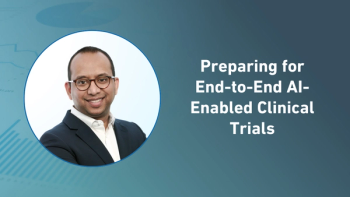- Applied Clinical Trials-10-01-2025
- Volume 34
- Issue 4
The Confidence Trap in Clinical Trials: When Knowing Just Enough Becomes Dangerous
Ways to identify false certainty, or "errogance," during the clinical site start-up-to-launch process—and better ensure site readiness and prevention of costly errors.
In response to some highly engaged feedback for my last Applied Clinical Trials column,
In clinical research, confidence is a double-edged sword. While a confident site team may move swiftly through study start-up, that same confidence can mask gaps in understanding and lead to costly errors once the trial is underway. This is known as the “confidence trap,” a behavioral phenomenon where individuals believe they understand more than they actually do. And in the complex, high-stakes world of clinical trials, that disconnect can be dangerous.
Recent trials have shown that protocol deviations, informed consent issues, and data inconsistencies often arise not from ignorance, but from overconfidence. This following scenario plays out over and over again—investigators and coordinators attend the site initiation visit (SIV), develop awareness and familiarity with the trial, and walk away feeling capable. But awareness and familiarity are not mastery and readiness. These sites and staff knew just enough to gain confidence but not enough to perform reliably.
This disconnect of confidence and mastery is well-documented in cognitive science. The Dunning-Kruger effect describes how individuals with limited knowledge often overrate their expertise (or mastery). In clinical trials, this can mean site staff are confident in their recall of complex procedures, even if their actual understanding is fragile or incomplete. And because initial training is rarely followed by reinforcement or feedback, that overconfidence persists unchecked.
So how do we design site start-up processes and training programs that calibrate—not inflate—confidence?
Confidence calibration as a design principle
Rather than documenting whether a site has completed training, we should measure what a site has actually learned and whether they are ready to apply critical knowledge under realistic conditions. This shift in mindset—from completion to readiness—demands training tools that assess not only correctness but also appropriately calibrated confidence.
Confidence-based assessments are one such tool. By asking site staff not only to choose an answer but to indicate how confident they are in their choice, we can identify false certainty (or “Errogance”). For example, a coordinator who selects the wrong response for an eligibility criterion and reports high confidence in that choice is at greater risk of making the same mistake in the field. That insight enables targeted mitigation before errors occur.
Another strategy is the use of reflective prompts. After completing a protocol module, learners might be asked to explain—in their own words—how they would apply key procedures during the first patient visit. This encourages active processing and reveals misunderstandings that multiple-choice questions can’t detect.
Just-in-time feedback and micro-assessments
Training and learning doesn’t end at the SIV. In fact, it shouldn’t. The period between site activation and first patient enrollment is critical—yet often quiet. Without reinforcement, cognitive decay sets in.
Just-in-time feedback can address this decay and recalibrate confidence before the first real-world test. Imagine a micro-assessment delivered 48 hours before a site’s first screening visit: a short series of applied questions or case-based scenarios that refresh protocol knowledge and check for lingering misconceptions.
These low-burden, gamified touchpoints can prevent high-impact errors.
Technology makes this feasible. Automated nudges, embedded quizzes, and confidence tracking dashboards can help clinical trial teams monitor both knowledge and certainty over time. Think of it as continuous calibration: ensuring that confidence aligns with competence, not just at the start, but throughout the trial lifecycle.
Creating a culture that embraces calibration
Of course, tools alone aren’t enough. Site teams must also be encouraged to embrace calibration. That means reshaping the culture around training and performance.
Trial leaders can help by normalizing uncertainty and rewarding intellectual humility. When investigators and clinical research associates model a willingness to say “I’m not sure” or “let’s double-check,” it signals that accuracy matters more than speed or bravado. And when retraining is positioned as a proactive benefit vs. a punitive response, it becomes easier for site teams to engage openly and reflectively.
Calibration isn’t about doubt or blame. It’s about precision and readiness.
Rethinking the start-up milestone
The goal isn’t to launch sites faster—it’s to launch them ready. That means seeing site start-up not as a single milestone, but as a behavioral process: one that requires reflection, feedback, and recalibration over time.
By applying what we know about overconfidence and learning science, we can design smarter activation strategies that protect against preventable errors.
In clinical trials, as with many complex processes, awareness and familiarity can be a liability. But with the right tools, mindset, and culture, we can help every site know enough to be ready.
Brian S. McGowan, PhD, FACEHP, is Chief Learning Officer and Co-Founder, ArcheMedX, Inc.; Kelly Ritch is Chief Operating Officer, ArcheMedX, Inc.
Articles in this issue
Newsletter
Stay current in clinical research with Applied Clinical Trials, providing expert insights, regulatory updates, and practical strategies for successful clinical trial design and execution.






.png)



.png)



.png)
.png)
